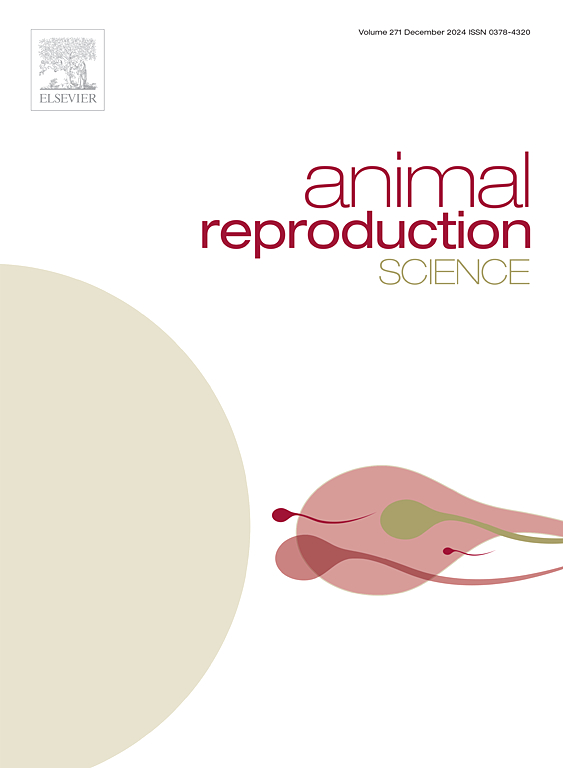Application of a practical method for short-term stored common carp sperm with extenders and quality adjustment before fertilization for breeding success
IF 2.2
2区 农林科学
Q1 AGRICULTURE, DAIRY & ANIMAL SCIENCE
引用次数: 0
Abstract
The main objective of this study was to elucidate whether there are any effects of sperm dilution time before short-term storage in common carp. The sperm of five males (2–2.5 kg body weight, 3 years old) with good spermatozoa motility (˃90 %) were diluted with carp extender immediately, 3 h post-diluted, and undiluted fresh sperm was used as control. Sperm motility and velocity of undiluted and diluted sperm were evaluated using a CASA system. A two-way ANOVA revealed that spermatozoa motility, curvilinear velocity (VCL), and straight-line velocity (VSL) were significantly impacted by storage time, varying dilution with extenders, and their interaction (p < 0.001). Sperm motility and velocity dropped steadily with increasing storage periods for diluted sperm, while they drastically fell for undiluted sperm and became immotile at 5 days post-storage. In the control group, the mean percentage of sperm motility was achieved by 40.60 % at 3 days post-storage and sperm diluted with Cejko solution immediately and 3 h post-diluted sperm retained motility at 65.13 % and 65.63 %, respectively, at 3 days post-storage and retained motility of 39.45 and 40.43 %, respectively, at 7 days post-storage. After 7 days post-storage, the diluted (immediately and 3 h post-diluted) pooled sperm had a 61.01 % and 56.70 % fertilization and a 43.40 % and 36.52 % hatching rate, whereas fresh sperm had an 89.34 % fertilization and 78.06 % hatching success. According to the results of the fertilization and hatching assay, compared to fresh sperm, 7 days of stored diluted pooled sperm produced a 68.29 % fertilization rate and a 55.60 % hatching rate.
求助全文
约1分钟内获得全文
求助全文
来源期刊

Animal Reproduction Science
农林科学-奶制品与动物科学
CiteScore
4.50
自引率
9.10%
发文量
136
审稿时长
54 days
期刊介绍:
Animal Reproduction Science publishes results from studies relating to reproduction and fertility in animals. This includes both fundamental research and applied studies, including management practices that increase our understanding of the biology and manipulation of reproduction. Manuscripts should go into depth in the mechanisms involved in the research reported, rather than a give a mere description of findings. The focus is on animals that are useful to humans including food- and fibre-producing; companion/recreational; captive; and endangered species including zoo animals, but excluding laboratory animals unless the results of the study provide new information that impacts the basic understanding of the biology or manipulation of reproduction.
The journal''s scope includes the study of reproductive physiology and endocrinology, reproductive cycles, natural and artificial control of reproduction, preservation and use of gametes and embryos, pregnancy and parturition, infertility and sterility, diagnostic and therapeutic techniques.
The Editorial Board of Animal Reproduction Science has decided not to publish papers in which there is an exclusive examination of the in vitro development of oocytes and embryos; however, there will be consideration of papers that include in vitro studies where the source of the oocytes and/or development of the embryos beyond the blastocyst stage is part of the experimental design.
 求助内容:
求助内容: 应助结果提醒方式:
应助结果提醒方式:


